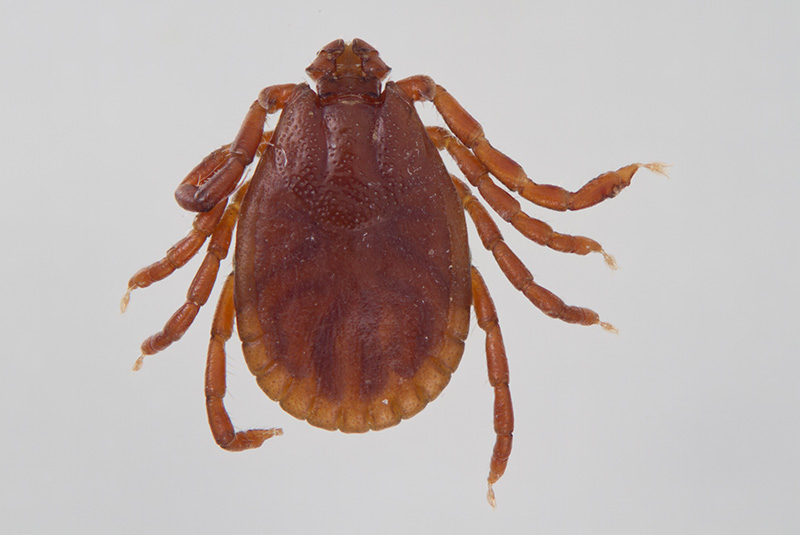Asian Longhorn Tick
go.ncsu.edu/readext?670399
en Español / em Português
El inglés es el idioma de control de esta página. En la medida en que haya algún conflicto entre la traducción al inglés y la traducción, el inglés prevalece.
Al hacer clic en el enlace de traducción se activa un servicio de traducción gratuito para convertir la página al español. Al igual que con cualquier traducción por Internet, la conversión no es sensible al contexto y puede que no traduzca el texto en su significado original. NC State Extension no garantiza la exactitud del texto traducido. Por favor, tenga en cuenta que algunas aplicaciones y/o servicios pueden no funcionar como se espera cuando se traducen.
Português
Inglês é o idioma de controle desta página. Na medida que haja algum conflito entre o texto original em Inglês e a tradução, o Inglês prevalece.
Ao clicar no link de tradução, um serviço gratuito de tradução será ativado para converter a página para o Português. Como em qualquer tradução pela internet, a conversão não é sensivel ao contexto e pode não ocorrer a tradução para o significado orginal. O serviço de Extensão da Carolina do Norte (NC State Extension) não garante a exatidão do texto traduzido. Por favor, observe que algumas funções ou serviços podem não funcionar como esperado após a tradução.
English
English is the controlling language of this page. To the extent there is any conflict between the English text and the translation, English controls.
Clicking on the translation link activates a free translation service to convert the page to Spanish. As with any Internet translation, the conversion is not context-sensitive and may not translate the text to its original meaning. NC State Extension does not guarantee the accuracy of the translated text. Please note that some applications and/or services may not function as expected when translated.
Collapse ▲
Dorsal view of an adult female Asian longhorned tick.
The Asian Longhorn Tick and More….
There are four common tick types and each is a vector for other issues. Ticks need to have a different host for each stage of their life cycle: Egg, Larva, Nymph, and Adult. The Black Legged Tick has a life cycle of about 2 years and is commonly known as a vector for Lyme Disease. The LoneStar Tick transmits Ehrlichiosis and is known to be associated with a red meat allergy for those bitten. The female is identified by the white dot or star on her back. The American Dog Tick bites are typically in the Spring and Summer and are a vector for Rocky Mountain Spotted Fever. The Brown Dog Tick can be found on dogs for each stage of its life, but can bite humans. It spreads Ehrlichiosis among dogs.
How is the Asian Longhorn Tick different? The life cycle is very quick in that the tick can reach maturity within 6 months. The females reproduce without a male present, so a single tick trans-located somewhere else can reproduce. The female can lay between 2,000-4,000 eggs.
Farmers should be concerned with the Asian Longhorn Tick because of the impact it has had on livestock farms. Ticks form large infestations on warm-blooded host animals including cattle, sheep, goats, dogs, and horses. The stress on the animal reduces its growth and production and in severe cases will kill the animal due to blood loss. The Longhorned Tick is known to transmit diseases such as theileriosis and ehrlichiosis, however, there have been no reports in the United States that the tick has transmitted the disease.
The tick is native to eastern China, Japan, the Russian Far East, and Korea. It has been found in Australia and New Zealand and has been a serious pest in these areas to livestock. In 2017, the United States Department of Agriculture’s National Veterinary Services Laboratories confirmed the first case of the Longhorned Tick in New Jersey. To date, it has been found in Arkansas, New Jersey, New York, North Carolina, Virginia, West Virginia, Pennsylvania, Maryland, and Connecticut. Close to home, the tick has been found in Carroll, Grayson, and Washington County Virginia as well as Surry and Wilkes County in North Carolina.
If you are concerned with Asian Longhorned Tick or think you have an infestation. Please place the tick or ticks in a vial with rubbing alcohol. All ticks can go in the same vial and contact N.C. Cooperative Extension, Ashe County Center and we will be glad to help you get those sent off.
How can you protect your livestock? This tick is responsible for not only poor producing livestock and potentially farm death losses, but it has also been shown in other places to transmit Theileria. Theileria has shown up in the United States, as close as Virginia and is believed to follow the appearance of the ticks. Livestock that has been affected are anemic and weak. There have been reports of late-term abortions, fevers, and cattle are typically reluctant to move. There are no known controls or treatments at this time. To help protect your herds and flocks try and control flow of ticks. Put out backrubs early and keep them charged with Permethrin. For more information on backrubs contact North Carolina Cooperative Extension, Ashe County Center. Limit your handling of livestock and ensure they have plenty of water and a good nutrition plan to help them stay healthy.
As veterinarians and other experts have more information regarding Asian Longhorned Tick and Theileria, it will be shared with you. For now please follow these recommendations and contact the Ashe County office for more information.



